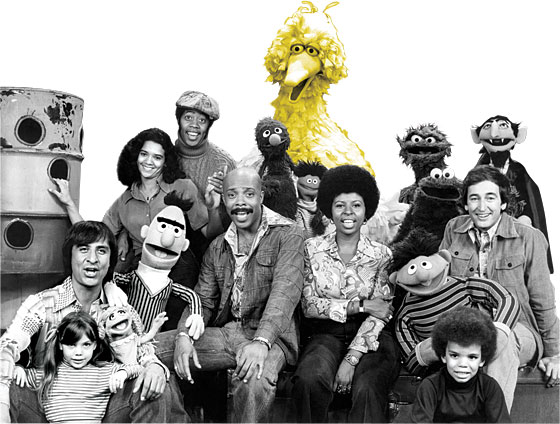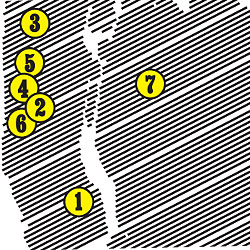
The idea for Sesame Street cropped up at a dinner party near Gramercy Park hosted by its future co-creator Joan Ganz Cooney when a guest who’d found his daughter sitting rapt before a TV test pattern wondered aloud if the tube’s hold on toddlers could be used to educate. It’s been shot here ever since, and its 40th season begins November 10.
Muppet Manhattan

1. The title 123 Avenue B was considered, which would place the show across from Tompkins Square Park at 8th Street on the site of St. Brigid’s Church. But that name was nixed for being too New York–specific.
2. Designer Charles Rosen based the set on an amalgam of streets in Harlem, the Bronx, the Upper West Side, and the blocks where West Side Story was set (which were destroyed to make Lincoln Center).
3. The iconic brownstone “123 Sesame Street,” where Maria and Luis live (with Bert and Ernie sharing the garden apartment), was likely based on a Columbus Avenue brownstone Rosen sketched.
4. The subway station is inspired by the old station at 72nd Street and Broadway.
5. The show was first filmed at Teletape Studios on 81st Street and Broadway …
6. … It moved to Dick Cavett’s former studio on Ninth Avenue and 55th …
7. … And moved again in 1993 to the Kaufman Astoria Studios in Queens, where it is shot today.
Debuts
Big Bird, Kermit, Bert and Ernie, Oscar, Grover, and Cookie Monster were all original characters.
When others showed up:
1971: Snuffleupagus
1972: The Count
1980: Elmo
1993: Zoe
2006: Abby Cadabby
• The first episode, on November 10, 1969, was sponsored by the letters W, S, & E and the numbers 2 & 3
• In 1993, the show introduced “Around the Corner,” a new block with new characters, but it was abandoned three years later after research showed that kids wanted the old block and the core characters.
About the Cast
Early tests of the show, using only real people and animated sequences, bombed with kids, but it found its legs with the addition of Jim Henson’s Muppets. After his death in 1990, it took a decade to acquire the rights to the characters.
Kermit the Frog
The first Sesame balloon added to Macy’s Thanksgiving parade, in 1977. Hosted The Tonight Show in 1979.
Bert and Ernie
Extensions of the personalities of Henson, who played Ernie, and his closest collaborator, Frank Oz, who played Bert.
Elmo
Rosie O’Donnell’s mid-nineties chats with him on her talk show led to 1996 holiday-season frenzy for Tickle-Me Elmo. The doll made Sesame Workshop hundreds of millions of dollars, helping it buy the rights for the other Muppets.
Big Bird
Cemented the show’s overnight success on a Time cover in 1970.
In 1983, producers won an Emmy for having the real-life characters explain the death of Mr. Hooper to Big Bird. Mr. Hooper had been played by Will Lee, an old thirties New York radical who’d really died.
Big Bird has, amazingly, been played from the beginning by Caroll Spinney, who’s now 75. Says Michael Davis, author of Street Gang: The Complete History of Sesame Street: “His right arm is above his head for twenty minutes at a time, because his hand is up inside Big Bird’s head manipulating his eyes … And they’ve got a video monitor strapped across his body so he can see where he is.”
Have good intel? Send tips to intel@nymag.com.